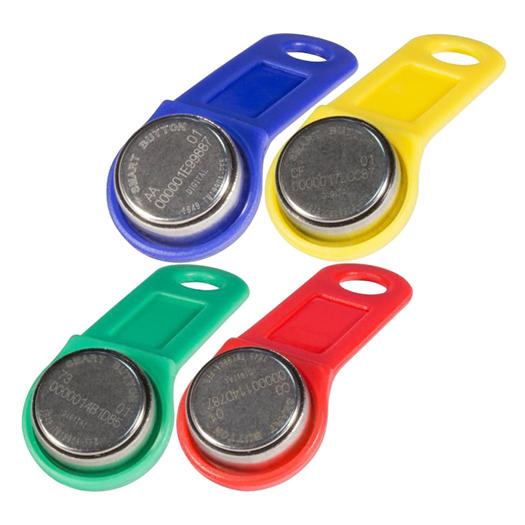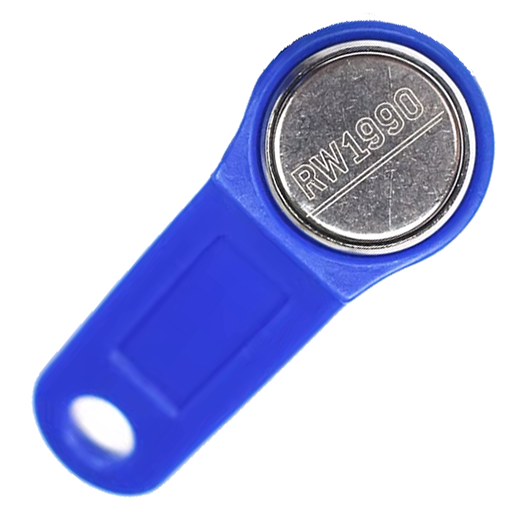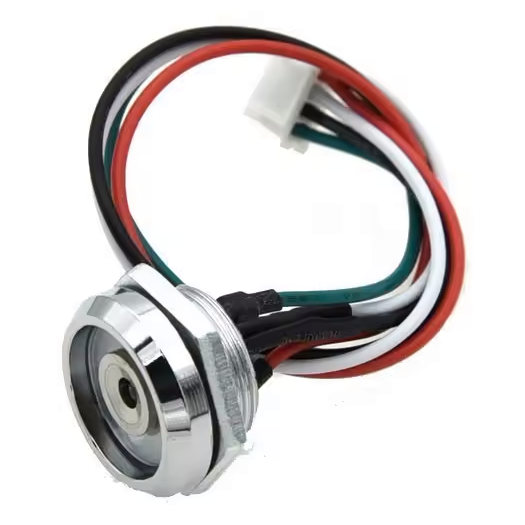🏠 vdwulp.github.io
📚 Arduino iButtonTag Library
An Arduino library handling iButton identification tags.
👍 Supported Devices
| Model | Reading ID-code | Writing ID-code |
|---|---|---|
| DS1990, DS1990A, DS1990R, TM1990A | ✔️ | |
| RW1990, RW1990.1, RW1990v1, TM08, TM08v2 | ✔️ | ✔️ |
| RW1990.2, RW1990v2 | ✔️ | ✔️ |
| RW2004, TM2004 | ✔️ | ✔️ |
| TM01, TM01C | ✔️ | ✔️ |
| Many other iButton tags | ✔️ |



✈️ Installation
Using Arduino IDE Library Manager - Recommended!
- Open Arduino IDE
- Go to Tools > Manage Libraries…
- Search for “iButtonTag”
- Click Install
- Click Install All to also install required OneWire library
If you don’t see the Install All button mentioned in step 5, you have an older Arduino IDE (<1.8.10). Consider upgrading the IDE, or repeat steps 1 to 4 above to install OneWire library. In step 3 search for “OneWire”.
Manual installation
- Download the latest release ZIP file from iButtonTag releases
- In Arduino IDE, go to Sketch > Include Library > Add .ZIP Library…
- Select the downloaded ZIP file
- Repeat steps above to install required OneWire library; in step 1 download ZIP file from OneWire releases
🚶 Basic Usage
Hardware Setup
- Connect data line of iButton probe to an Arduino digital pin, this is the 1-Wire data line.
- Connect a 2200 Ω to 4700 Ω pull-up resistor between the 1-Wire data line and Arduino 5V pin.
- Connect ground line of iButton probe to an Arduino ground (GND) pin.
Code Example
#include <iButtonTag.h> // Include the library
#define PIN_PROBE 2 // Data line connected to pin 2
iButtonTag ibutton( PIN_PROBE ); // Setup iButtonTag on the pin
void setup(void) {
Serial.begin(9600);
}
void loop(void) {
iButtonCode code; // Variable to store ID-code
Serial.println( "Reading... " );
int8_t status = ibutton.readCode( code ); // Try to read ID-code
if ( status > 0 ) { // Code read succesfully
Serial.print( "iButton code read: " );
ibutton.printCode( code ); // ID-code is in variable _code_
Serial.println();
}
}
🏃 Advanced Features
- Writing new identification code to (re)writable iButton tag models
- Reading multiple iButton probes on the same 1-Wire data line
🛠️ Hardware Notes
iButton identification tags
- Many iButton tags have their identification code engraved on them in hexadecimal: in the center the reversed tag specific 6-byte code, above it on the right side 1-byte family code and on the left side 1-byte checksum. When read by this library the order is: family code - tag specific code - checksum.
- Official iButton identification tags all have a unique identification code that cannot be changed. However, this library supports writing a new code to multiple types of (re)writable compatible tags.
- DS1990 (not DS1990A or DS1990R) can’t be used with multiple identification tags on a single data line and requires special handling. For details see comments on function readCode in reference documentation.
Pull-up resistor
- The official recommendation is to use a 4700 Ω pull-up resistor between the 1-Wire data line and Arduino 5V pin when reading from an iButton tag.
- Writing a new code to (re)writable iButton tags may require more power for a successful and persistent result. To get more power to the tag, a 2200 Ω pull-up resistor between the 1-Wire data line and Arduino 5V pin has been tested to be a good value.
iButton probes
- iButton probes come in many forms, some have LED-indicator(s) with one or two colors, see some examples.
- No probe? No problem… see instructions in probe documentation.
📓 Documentation & References
Documentation
- Complete iButtonTag library reference documentation with detailed information on all types, constants and functions.
- iButtonTag library GitHub repository.
Articles
Data sheets
🙏 Thanks
- The creator(s) of the OneWire library iButtonTag depends on. It’s a very solid implementation of the 1-Wire protocol. I learned a lot by studying the protocol documentation in combination with the source of this library.
- The creator(s) of the DallasTemperature library. When studying the 1-Wire protocol, working with the Dallas DS18B20 Temperature Sensor made everything more practical. In this period I also tried to contribute to this library.
🗒️ License
MIT License, full text available in LICENSE file.
Copyright (c) 2025 SA van der Wulp

